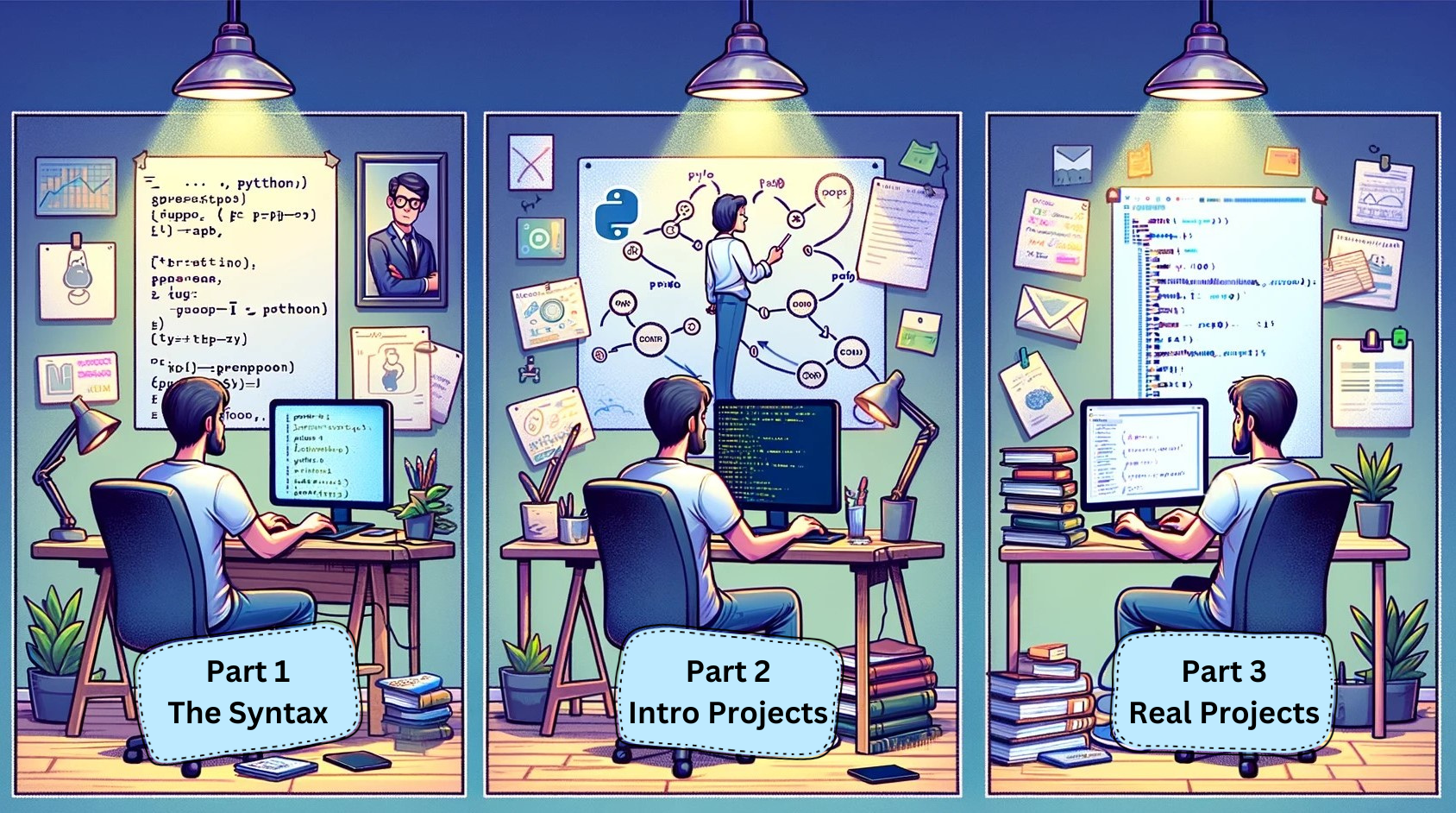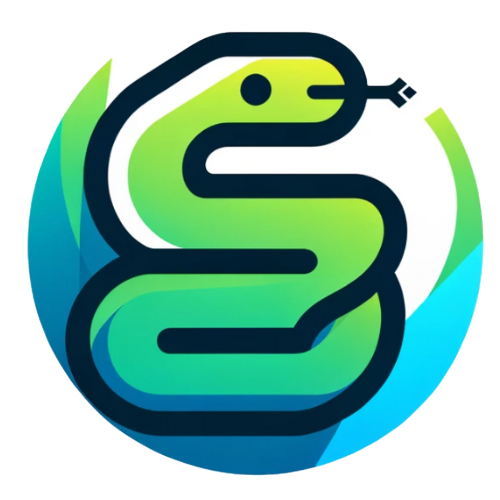The 3 steps of learning Python.
Learning Python can be divided in 3 parts and that is it really...

→ What are the three steps.
- The Syntax : mastering the basics (variables, control flow, functions, modules)
- Free Discovery : applying knowledge through personal projects (something you like and probably won't show)
- Showcasing : Building a portfolio to showcase your problem-solving skills and employability.
This approach ensures a solid foundation, practical application, and a tangible demonstration of your abilities to potential employers.
→ The Syntax
The only theory you should know at first.
- Variables and Data Types: Learn how to store and manipulate data.
- Control Flow: Understand how to use conditional statements and loops to control the flow of your programs. (If you are new to programming).
- Functions: Discover how to organize your code into reusable blocks.
You are probably already done.
You can revisit the basics anytime. And most often than not, people are ready to leave this step quit early. Most people are stuck here for reasons explained in my | How to avoid tutorial-hell article.
→ Personal Projects
You won't ship it and that's ok.
Got the basics? Great, now's the time to tackle some personal projects. They're your playground for deepening Python skills, unleashing creativity, and solving problems. Pick projects that grab you, even if they don't end up polished and perfect. It's all about the journey and the skills you pick up along the way.
Take something you will enjoy.
For those looking to secure a job or freelance opportunities, having a portfolio of projects is crucial. Your portfolio is a tangible proof of your skills and creativity. It should showcase a variety of projects that demonstrate your ability to solve problems with Python. At LearnPython.Today, we guide you through the process of building a portfolio that stands out.
→ Production Grade Projects
What Employers want to see.
- Diversify Your Projects: Include projects from different areas to show your versatility.
- Document Your Process: Use README files and comments to explain your thought process and the technologies used.
- Highlight Challenges and Solutions: Employers are interested in how you overcome obstacles, so detail the challenges you faced and how you solved them.
- Deploy Your Projects: Make your projects accessible by deploying them online. Platforms like GitHub Pages or Heroku can be used for showcasing web-based projects.
Don't forget the boring parts.
For those looking to secure a job or freelance opportunities, having a portfolio of projects is crucial. Your portfolio is a tangible proof of your skills and creativity. It should showcase a variety of projects that demonstrate your ability to solve problems with Python. At LearnPython.Today, we guide you through the process of building a portfolio that stands out.
→ Conclusion
Master the basics, then cycle between learning and doing. Aim higher with each project, fueling your motivation and tackling tougher challenges. Remember, demotivation is the main roadblock—keep pushing forward!
